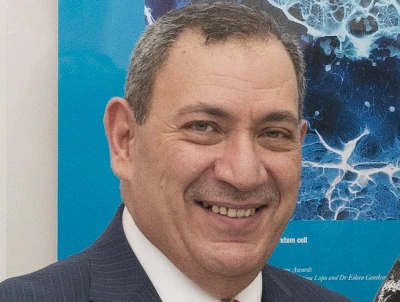333 - Updated Results of RESTART Protocol (<em>R</em>adioth<em>E</em>rapy bridging and con<em>S</em>olida<em>T</em>ion for C<em>AR-T</em>) in Large B-cell Lymphoma
Presenter(s)

G. Mikhaeel1, S. Bouziana2, M. Northend3, C. Bourlon2, D. Springell4, C. Roddie5, J. L. Brady6, M. Correia De Farias7, R. Sanderson8, R. Benjamin8, A. Hwang9, S. Kamat7, K. Courtney7, P. Patten8, E. Kumar7, P. Hardefeldt7, D. Yallop7, G. Ntentas10, K. Keshwani11, S. Sivabalasingham11, and A. Kuhnl12; 1Guy's Cancer Centre, Guy's & St Thomas' NHS Foundation Trust, London, London, United Kingdom, 2King's College Hospital NHS Trust, London, London, United Kingdom, 3King's College Hospital NHS Trust, London, LA, 4University College London Hospital NHS Trust, London, London, United Kingdom, 5University College London Hospital NHS Trust, london, United Kingdom, 6Guy's and St Thomas' NHS Foundation Trust, London, United Kingdom, 7King's College Hospital NHS Trust, London, United Kingdom, 8King's College NHS Trust, London, United Kingdom, 9University College London Hospital NHS Trust, London, United Kingdom, 10Nuffield Department of Population Health, University of Oxford, Oxford, United Kingdom, 11Proton Beam Therapy Centre, University College London Hospitals NHS Trust, London, United Kingdom, 12Kings, London, United Kingdom
Purpose/Objective(s):
Radiotherapy (RT) is commonly used before and after anti-CD19 CAR-T for LBCL, but patient selection and RT details lack standardization. We initiated the RESTART protocol to standardize, promote, and optimize RT as bridging, including for advanced stages, and introduce early consolidation RT using predefined criteria and CAR-T-sparing techniques.Materials/Methods:
Patients with LBCL approved for anti-CD19 CAR-T as second or third-line treatment were prospectively enrolled in two large UK CAR-T centres. The protocol had two pathways: A (bridging RT, bRT) and B (systemic therapy bridging with consolidation RT, cRT), based on disease spread and pace. Pathway A, involving RT at 20-40Gy for high-risk and 4Gy for other sites, was used if RT could cover most disease sites. Pathway B was for rapidly progressing disease or multiple extranodal sites. Indications for cRT included high-risk lesions on baseline PET-CT (=5cm and/or SUVmax =15) with a Deauville score of 3-4 or 5 (partial response) on the 1-month PET-CT. cRT was scheduled 6-8 weeks post CAR-T using CAR-T-sparing techniques. These methods involved: 1) contouring and dose optimization of blood vessels and blood-rich OARs to minimize doses to blood, and 2) measures to reduce beam-on time such as hypofractionation, limited beam angles, and flattening filter free beams.Results:
Between October 2021 and May 2024, a total of 182 patients were enrolled. Of these, 50 received RT: 28 in pathway A (bRT) and 22 in pathway B (cRT), while 132 did not receive RT. The median age of RT-treated patients was 56 years (range 20-79). In this group, 52% had stage III-IV disease (32% pathway A, 77% pathway B), 37% had bulky disease, 16% had =2 extranodal sites, and 12% had high LDH. The median RT dose was 30Gy in both pathways (20-36Gy/10-15# and 25-37.5Gy/5-15# in A&B, respectively). One patient in pathway A did not receive CAR-T due to PD. Median needle-to-needle time for RT-treated patients was 36 days (43 for pathway A and 35 for pathway B). The overall response rate was 89.4% at 1 month (51.1% DS 1-3) and 75.7% at 6 months. With a median follow-up of 12.1 months, 9 patients progressed (4 in pathway A and 5 in pathway B) and 5 died, all due to PD. The 1-year PFS (intention-to-treat analysis) for the RT-treated group (50 patients) was 63% (95% CI 49-76), while for the no-RT group (132 patients), it was 56% (95% CI 48-64). The 1-year OS was 85% (95% CI 75-95) for the RT group and 65% (95% CI 57-73) for the no-RT group. Significant toxicity included 5 cases of grade-3 ICANS, but no cases of CRS grade= 3 were observed. Additionally, no grade=3 toxicity was reported after cRT.Conclusion:
The routine use of a prospective protocol with pre-defined criteria for the indications of RT with CAR-T, including in the bridging and consolidation settings, is practical. The overall response rate, PFS, and OS are promising, and no unforeseen toxicity was observed.